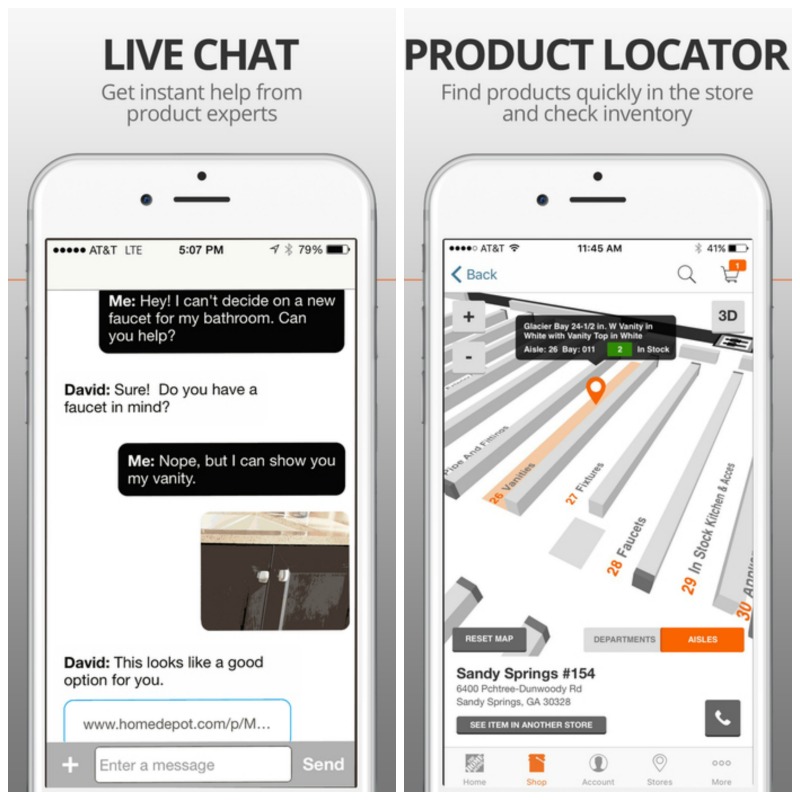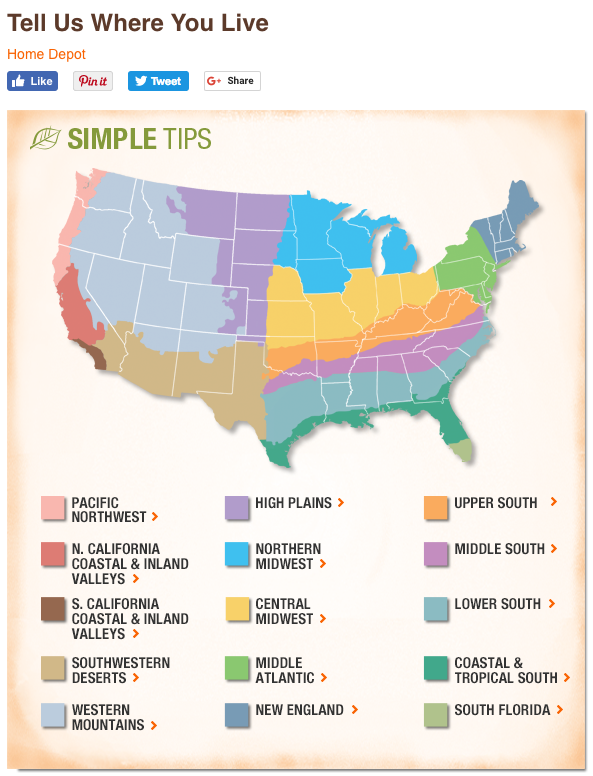
The Home Depot’s home improvement content has often been heralded for its content strategy, from their seasonal focus and how-to video content to app features and internal communications. So, we wanted to learn more about their content-driven marketing campaigns, mobile media strategy, and approach to paid media and SEO. Erin Everhart, Senior Manager for Media Strategy & Mobile, satisfied our curiosity and shared insights gained as she worked her way from SEO Manager to her current role at the retail giant, which is enjoying 14.8% year-over-year earnings.
Can you share how you’ve been able to earn two promotions in just two years working as part of The Home Depot’s digital marketing team?
Thanks for having me! I’m incredibly grateful for the opportunities The Home Depot has afforded me, and it’s rewarding working for a company that values its associates and motivates and rewards them as such.
I try to abandon the “not my job” mentality and simply do what’s best for the business. It’s so easy to get wrapped up in our little bubble and only focus on what’s directly impacting our day-to-day or our KPIs, and we forget about the larger picture. If you truly believe something will have a great impact on the overall company, don’t take no for an answer and don’t succumb to the “We’ve always done it this way” mentality. That may mean taking on side projects, adding additional work that may not directly be in your “job description,” or volunteering for special projects, etc., but the more you put yourself out there and the harder you work, you will get recognized for that drive and that passion.
What are your goals in terms of influencing their mobile behavior while in the store vs. when they are outside of the store?
My primary goal is to drive people in-store. We have a strong ecommerce presence, which helped us win the first Internet Retailer of the Year award in 2015, and while consumers are becoming more adept at making mobile purchases, the bulk of our business is still done in-store.
So, when they’re outside of our store, this means making things like our store hours, driving directions, phone number, or other pertinent business information as readily available as possible, so users don’t have to go hunting for the information they need. This is accomplished through dedicated store pages so it’s clearly shown on Google’s SERPs and also carried over into our mobile app.
When customers are in-store, our app team has recognized there’s an entirely different use case and have made updates like more video, 360-degree turns of product, inventory availability, and even live chat to help them make the best buying decision.
What would you say are your biggest challenges regarding mobile and digital advertising?
With mobile media specifically, it’s measurement and attribution. I work to deliver the most efficient media campaigns possible, and many times that means measuring media based on how much revenue it generated. For the lower funnel channels that drive immediate conversion, that’s great, but since my goal with mobile is how to get people in-store, that makes it a little more difficult since it’s harder to track what mobile display ad or mobile PPC ad resulted in an in-store purchase. So I’m constantly thinking about different metrics we should be measuring mobile media against so we know the full picture of how our customers are interacting with it.
Can you share an example of one of The Home Depot’s most successful content-driven marketing campaigns?
I’m a big fan of our regional gardening tips content. Gardening is so regionalized that you just can’t give blanket statements that will work across different areas, and that section does a great job of delivering content that’s only going to be applicable to you—everything from types of edibles to grow, which soil works best for which plants, and ways to get rid of insects common in your area.
You work on content for radio, print, digital, and more. How do user journeys guide your omnichannel strategy?
They’re a part of it, but the theory of user journeys is a lot easier to understand than actually putting it into the way you buy or execute your media simply because that “journey” can be remarkably fragmented. We have a fantastic customer insights team that helps shed light into purchasing cycle, devices used, channels interacted with, etc., but there’s almost no way we can map out exactly when and what channels customers used during a particular purchase, because that level of detail is so granular. Think about the last thing you purchased. Would you be able to tell me every step, every channel, every device you used that got you there? You might come close, but a lot of these steps in the user journey are basically instincts to customers now; muscle memory. They don’t recant or think about purchasing habits the way marketers do or even the way marketers want them to.
You partner with in-store and online merchandising to optimize promotional messaging and business opportunities. How do you accomplish this?
So much of that is just taking the time to understand their business. It’s easy to put up a display ad when there’s a hot promo attached to it, but we’re constantly trying to be more deliberate in our media placements to better tell The Home Depot story. It’s things like getting deeper than demographics, leveraging insights from our first-party data to better predict shopping patterns, and layering on accessible third-party data to fill in gaps, but I can’t do any of that until I truly understand the product all of that content will go to support. When do customers buy it? What is it used for? What problem is it solving? Is there seasonality or certain regions where it’s most applicable?
Learn more about The Home Depot’s award-winning content in the ContentWRX Index: Retail edition.
Events, Resources, + More
The Ultimate Guide to End-to-End Content
Discover why + how an end-to-end approach is critical in the age of AI with this comprehensive white paper.
The Content Advantage Book
The much-anticipated third edition of the highly rated book by Colleen Jones is available at book retailers worldwide. Learn more!
20 Signs of a Content Problem in a High-Stakes Initiative
Use this white paper to diagnose the problem so you can achieve the right solution faster.
Upskill with Content Science Academy
Training for modern content roles through on-demand certifications + courses or live workshops.









Comments
We invite you to share your perspective in a constructive way. To comment, please sign in or register. Our moderating team will review all comments and may edit them for clarity. Our team also may delete comments that are off-topic or disrespectful. All postings become the property of
Content Science Review.